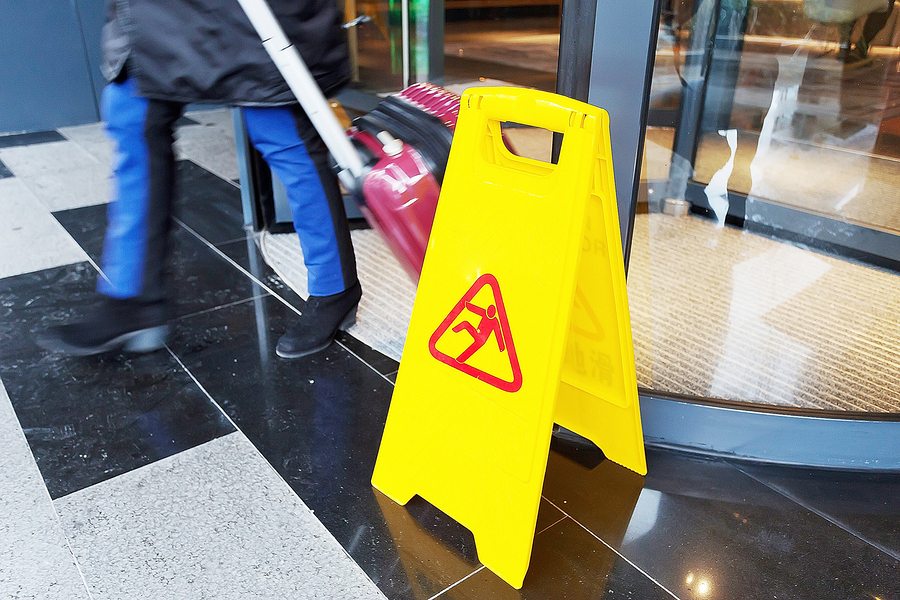If you want to keep your employees safe, finding ways to eliminate the danger of slips, trips and falls will go a long way towards helping you do so. According to the Occupational Safety and Health Administration (OSHA), this nasty trio makes up the majority of general industry accidents each year. They also cause 15 percent of all accidental deaths. The only greater cause of fatalities is motor vehicles.
Walking and working surfaces generally play a part in slips, trips and falls regardless of industry. For this reason, the OSHA standards for walking/working surfaces apply to all permanent worksites with the exception of domestic, mining and agricultural locations. OSHA has standards employer can refer to for walking/working surfaces within general industries, shipyards, marine terminals, longshoring and construction.
Definitions
Before you begin to plan ways to prevent slips, trips and falls, it may be helpful to understand their definitions. According to OSHA, a slip is the result of too little friction between an employee’s footwear and the walking/working surface resulting in a loss of balance. Trips occur when a foot or lower leg is stopped by an object while the upper body continues moving, resulting in a loss of balance. Trips also occur with an unexpected step to a lower surface that causes a loss of balance.
There are two different types of falls, though both occur when your employee finds him or herself too far off center of balance. The first is a fall at the same level—defined as a fall to the same walking or working surface or against objects on the same surface. The second is a fall to a lower level, defined as a fall to a level below the walking/working surface.
Causes and Prevention
A common cause of slips is a wet walking/working surface due to spilled product or the presence of water, mud, dirt, grease or other fluids. If you keep surfaces free from all such forms of contamination, you’ll greatly reduce the incidence of slips.
Highly polished floors, freshly waxed surfaces and transitions from one type of walking surface to another (such as carpet to vinyl) can also cause slips. Make sure your cleaning crew is using appropriate cleaning products and processes that will not cause workplace slips.
Trips are often the result of objects that have placed in areas where they do not belong, such boxes in aisles or other clutter in walkways and work areas. Keep everything in its place and maintaining a neat and tidy workplace can reduce the incidence of trips.
Unmarked steps and ramps also cause trips, as do irregularities in walking surfaces. Use signs and other means to communicate visual warnings to your employees and worksite visitors. Track where trips occur in your workplace and eliminate walking surface transitions and irregularities if they are a regular source of incidents.
Poor lighting can increase the incidence of both trips and slips. Make sure your worksite is adequately lit and that you’re keeping lights clean. Lights that are covered in dust and dirt aren’t much better than no lights at all.
Stairway floor openings should all be guarded by standard railing on all sides (except entrance). Ladderway floor openings should also be guarded by railing. Pit and trapdoor floor openings should be guarded by covers and attended by someone when the cover is not in place. All of these measures can help prevent falls to a lower level.
Slips, trips and falls can reduce productivity and damage your company’s bottom line. Fortunately, most can be prevented with proper construction and implementation of a workplace safety program. Contact us today for a program review or additional assistance.



